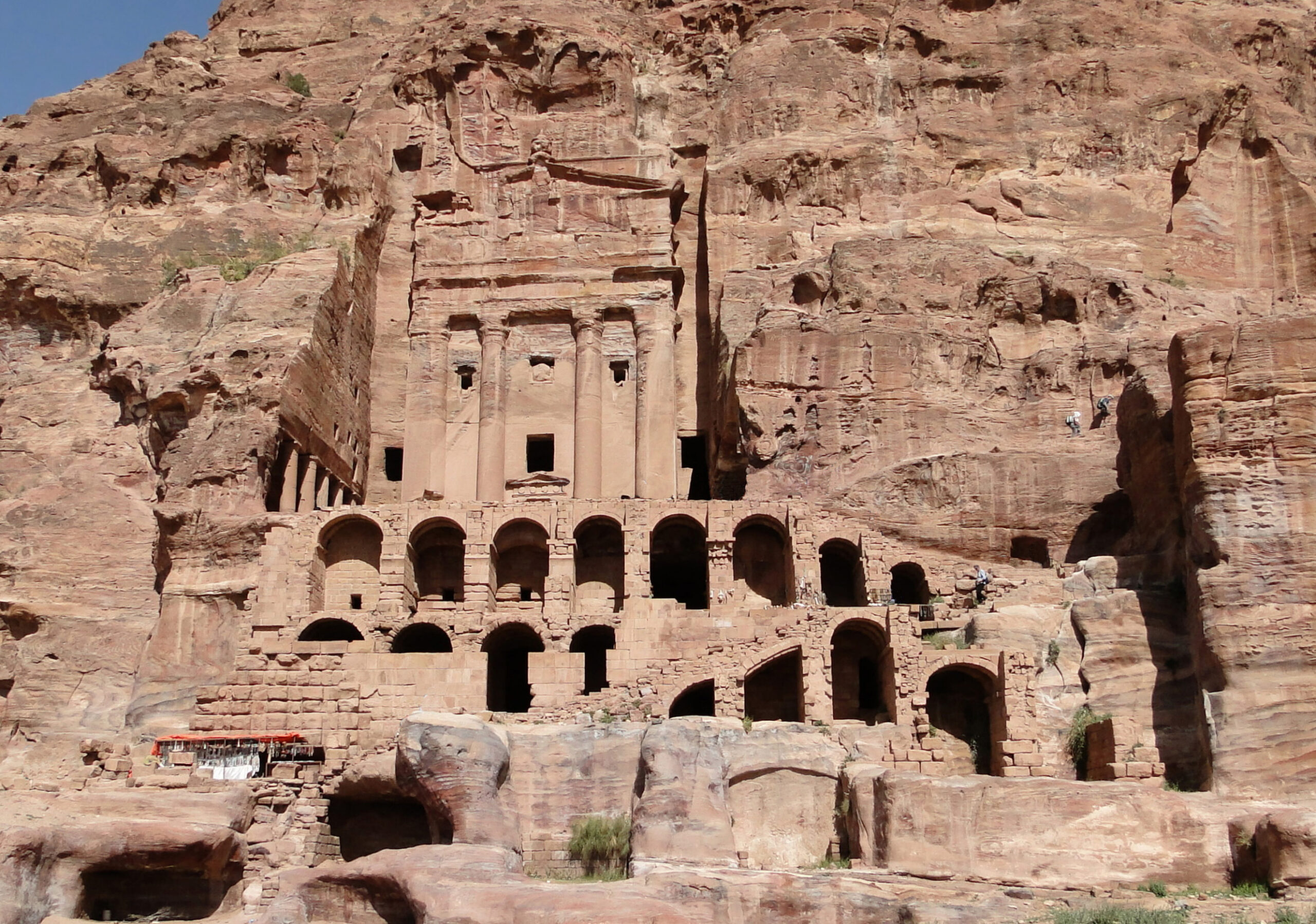The Urn Tomb, situated within the ancient Nabatean city of Petra in modern-day Jordan, stands as a testament to the architectural grandeur and cultural significance of this remarkable UNESCO World Heritage Site. Perched high on the cliffs overlooking Petra’s central valley, the Urn Tomb is one of the most iconic and well-preserved structures within the ancient city, offering visitors a glimpse into the sophisticated engineering and artistic craftsmanship of the Nabatean civilization.
Believed to have been constructed during the 1st century CE, the Urn Tomb derives its name from the large stone urn that once adorned its facade. This monumental structure served as a tomb for a wealthy Nabatean individual or family, showcasing the opulence and status of its occupants. While the identity of the tomb’s occupants remains unknown, the grandeur of the structure itself speaks volumes about the wealth and influence of Petra’s elite during the height of the Nabatean civilization.
The Urn Tomb is characterized by its imposing facade, which rises over 20 meters high and is adorned with intricately carved columns, friezes, and decorative motifs. The facade features a monumental entrance leading into a large central chamber, which is believed to have housed the sarcophagi of the tomb’s occupants. Carvings and reliefs depicting mythological figures, deities, and scenes from Nabatean life adorn the walls and columns, showcasing the artistic mastery of the Nabatean craftsmen who created them.
One of the most striking features of the Urn Tomb is its location, perched high on the cliffs overlooking Petra’s central valley. Accessible via a series of stone staircases and pathways, the tomb offers breathtaking panoramic views of the surrounding landscape, including the iconic Treasury and the towering sandstone cliffs that define Petra’s skyline.
The interior of the Urn Tomb is equally impressive, with a series of chambers and passageways that once housed the sarcophagi and funerary goods of its occupants. While the tomb has been looted and plundered over the centuries, archaeologists have uncovered evidence of elaborate burial rituals and offerings, including pottery, jewelry, and other valuable artifacts.
In addition to its role as a tomb, the Urn Tomb also served as a place of worship and pilgrimage for the Nabateans, who revered their ancestors and believed in the afterlife. The tomb’s imposing facade and commanding presence would have inspired awe and reverence among visitors, serving as a symbol of the Nabatean’s religious beliefs and cultural identity.
Over the centuries, the Urn Tomb fell into disrepair and was eventually abandoned, its grandeur obscured by the sands of time. However, in recent years, efforts have been made to preserve and protect this iconic monument, ensuring that future generations can continue to marvel at its beauty and learn about its rich history.
Today, the Urn Tomb stands as a symbol of the enduring legacy of Petra and the ancient Nabatean civilization. Its impressive facade, breathtaking location, and rich history make it one of the most visited and beloved attractions within the ancient city, attracting visitors from around the world who come to marvel at its beauty and learn about its fascinating past.



